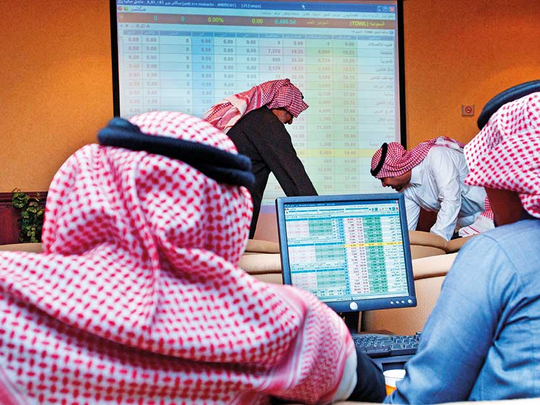
Dubai: Amid near-zero interest rates, investors in search of elusive yields are increasingly looking at bonds in the Gulf cooperation Council.
The US Federal Reserve gradually started to raise rates in the second half of 2016; however, other markets such as the UK, Eurozone and Japan continue to have abysmally low levels of bond yields, making higher yielding Gulf bonds attractive.
“This [low rate environment] has created a dearth of investment opportunities for bond investors. The desperation to invest in better yielding quality papers has wooed investors towards the emerging bond markets of the GCC,” M.R. Raghu, executive vice-president at Kuwait Financial Centre (Markaz), said.
The Bloomberg Barclays GCC index gave a 3.35 per cent return in the first half despite a 15 per cent fall in oil prices. This compares with a 1.38 per cent yield on US treasuries, and 1.89-2.31 per cent yields on 10 year to 30 year US bonds.
“Still, near-zero interest rates have made investors (not only in Asia, but also in US and Europe, where interest rates are low) willing to increase their exposure to GCC sovereigns and banks. They are gradually becoming cognisant of the high quality papers available in the GCC region, and the interest is set to continue for good part of 2017,” Raghu said in a blog post.
GCC nations for their part offer better yields than other developing economies of similar credit rating. For example, Kuwait and Abu Dhabi’s ten-year sovereign bonds have Yield to Maturity (YTM) that is higher by 20 and 45 basis points respectively compared to South Korean government bonds. Attractive yields and relatively safe economies make it even more appealing from an investor point of view. The GCC region currently offers a mix of credit ratings — Abu Dhabi and Kuwait have the highest AA rating while Qatar, Saudi Arabia, Dubai and Oman have ratings that range from AA- to BBB- providing investors with wide investment opportunity.
Strong first half
Sukuk issuance in the GCC was at $17 billion (Dh62 billion) in the first half of the year, topping the $13.7 billion figure achieved in 2016.
“We had [an] extremely strong first half, but going ahead we will see a little bit interest rate volatility based on what the Fed (Federal Reserve) will do on the potential balance sheet actions,” Abdul Kadir Hussain, head of fixed income asset management at Arqaam Capital, told Gulf News recently.
“There are a few issues in the pipeline. The first half was dominated by $9 billion [Dh33 billion] issue from Saudi, that sort of size isn’t anywhere in the pipeline. I think the second half will be a lot quieter,” Hussain said.
Saudi Arabia’s first international bond issuance valued at $17.5 billion in October last year was the biggest recorded emerging market bond, far outpacing the previous record of Qatar’s $9 billion sovereign bonds issued in May 2016.
Corporate issues
Saudi Arabia was the most active nation in the Middle East accounting for 21 per cent of activity by value, followed by Kuwait at 18 per cent.
From 2007 alone, there has been 225 corporate issues that has hit the GCC market with more than half of that (137 issues) coming up after 2013. There have been 17 companies that have come up with bond issuances in 2017, double the number of companies that issued bonds in 2016.
Hussain expects another $3-5 billion of sukuk issuance for the rest of the year. Arqaam expects a pickup in issuances from September, although interest rate volatility may remain.
In all, the GCC is where the bright spot is as far bonds investments are concerned.
“In the current environment, GCC region remains the sole bright spot that promises to give higher yields with relative stability,” said Raghu.












